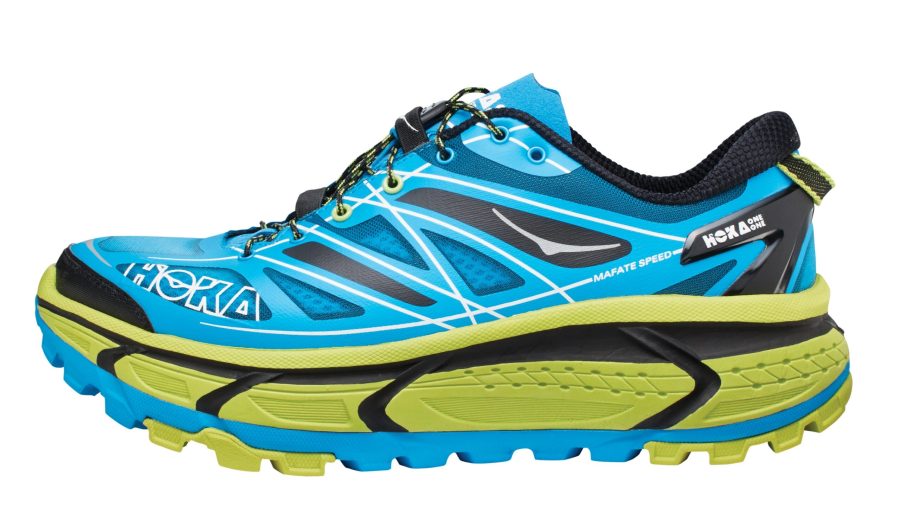Daniel Neilson is impressed by the French brand’s eye-catching and generously soled trail shoe
I took the Hoka One One Mafate Speed out of the box and ran 18 miles in them. Four weeks later I ran the off-road Beachy Head marathon in them, and I’ll be doing next year’s in them as well. Quick review: impressive.
Hoka One One is a brand that specialises in the ‘maximally cushioned’ sole and could be seen as a reaction to the barefoot running craze that we’ve covered in The Great Outdoors before. It’s important firstly, however to distinguish between a thick sole and a low drop. One of the things that characterised the barefoot running shoe – Vibram FiveFingers, VivoBarefoot, and the like – was a low drop. This is the difference in height between the heel and toe. Whereas some traditional trail shoes have the heel some 12mm higher than the toe, the trend has been to lower this drop. The reason for this is that designers consider a lower drop to be a more natural way to run. Obviously, if we were actually walking barefoot, there would be a 0mm drop – and some running shoes had this. But also, the Vibram FiveFingers and VivoBarefoot are very low to the ground. The advantages were a real feel for the ground, but blimey you felt a sharp stone. Now, the Hoka One One is striking because you are a long way off the ground – some 31-35mm – yet there is still a very low drop of 4mm. So what does this mean?
Out of a box they do feel very soft. The RMAT midsole (a combination of EVA and rubber) is spongy and very thick – something that is accentuated by the styling. They are also remarkably light at 642g (size 9) for such a substantial shoe. When I pulled up the laces over a thin tongue and started running across the South Downs I noticed immediately the curved sole that felt as though it was propelling me on. Mile after mile my knees and joints felt great, and I absolutely put this down to the shoes. Over the Beachy Head Marathon, I also suffered less at the end and over the next couple of days in the joints than similar length races. Now, it is a taste thing too. My running pal was wearing VivoBarefoot shoes all the way and laughed at these – he did just as well in those. What are the disadvantages? Well, there is more of a disconnect with the ground, but only compared to particularly low trail shoes. I noticed little difference between these and my regular Salomon Fellraiser shoes. In fact, on the downhill sections they were more controlled, perhaps because striking the foot on so much EVA felt like putting the brakes on.
I’ve heard that runners particularly like them, and they certainly excel in that arena. I also believe having walked distances in them, they will also suit backpackers looking to lessen the impact on knees and hips. EVA soles generally don’t last as long as PU however, and if you buy these you’ll be putting the miles in. Did I mention I was impressed?
Reviewed in September 2014 issue







